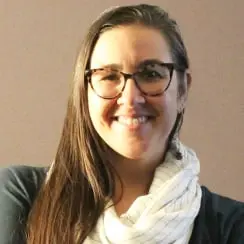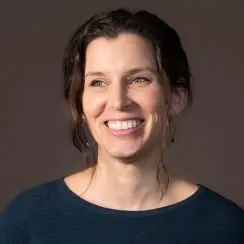 | 1 LU |
 | 1 LU |
Call to Action:
Abstract: When designers, educators, and learners come together, it’s with a shared goal: to make schools better. Yet, despite inclusive design practices and growing collaboration, we continue to hear that the building itself is getting in the way of learning. Why then do we imagine a future that looks nothing like the present or past, yet continue designing schools that remain fundamentally unchanged? This issue is especially critical in middle school, where students experience key emotional, social, and cognitive transitions. Learning spaces must foster connection, creativity, and adaptability while equipping educators to prepare students for an uncertain future. Many school buildings, however, remain outdated and misaligned with modern learner-centric models, limiting their ability to support evolving educational needs. This session presents key findings from a ONEder Grant research study exploring how school buildings can better support learning now and in the future. The research team convened a multidisciplinary Advisory Group of educators, designers, academics, industry researchers, and a futurist to align research goals with emerging industry trends and real-world challenges. Drawing on insights from neuroscience, education, and design, this research focuses on advancing the design and use of learning settings for early adolescents, aged 11–15, over the next decade. Through our research, we uncovered simple yet transformative insights:
These tools empower all users to better understand, shape, and adapt learning settings in alignment with educational goals. As education evolves, learning settings must keep pace with advancing pedagogy, emerging learner needs, and future-ready competencies. This session, led by design researchers and educators, introduces a spatial framework and interactive toolbox that aligns people, practices, and place to create adaptive, future-ready learning spaces. By exploring affordances and space signals, attendees will gain practical strategies to foster collaboration, align design with educational goals, and create dynamic learning environments that serve students today and in the future.
Learning Objectives:
Design of Educational Facilities
Aligning Educational, & Community vision with design to support a regenerative mindset for a sustainable and future ready Educational Facility.

Practicing at the intersection of architecture and interiors, Stacey grounds her approach in human experience and community voice. With 19 years of experience, she focuses on innovative learning spaces and is an Accredited Learning Environments Planner with Mahlum. She advocates for co-creation as a pathway to meaningful architectural experiences, fostering connections through community engagement. Stacey serves as President-Elect of the IIDA International Board and Director of DEI for the Washington State A4LE Chapter.

Claudia brings 17 years of interior design experience on a wide variety of projects including public works, life-science research and corporate facilities, educational environments, and healthcare. She offers a highly organized and critical approach to design thinking, constantly striving to create functional, healthy, sustainable and beautiful interior environments for her clients. She holds a Bachelor of Science in Interior Design and a minor in Human Communication from Arizona State University.

Terry, an Assistant Professor at Grand Valley State University, holds a Ph.D. in Urban Education from Eastern Michigan University. His research and teaching are informed by critical race theory. He focuses on the transition and persistence of first-generation and marginalized students in higher education. Terry’s work also explores place-based learning experiences that encourage students to engage in reflective practices aimed at dismantling systems of bias.

Jerry is a Senior Learning Consultant at Steelcase, where he partners with K-12 districts, colleges and universities nationwide to develop innovative learning environments that enhance student engagement, persistence, and performance. With over 20 years of experience as a K-12 educator, Jerry now also teaches future educators at Grand Valley State University. In 2022, he received the Pew Teaching Excellence Award for Adjunct Faculty. Jerry’s current research interests include student learner identity and teacher space pedagogy as they relate to positively designed learning environments. His unique combination of classroom experience and expertise in educational space design enables him to help institutions create environments that support both teaching and student success.